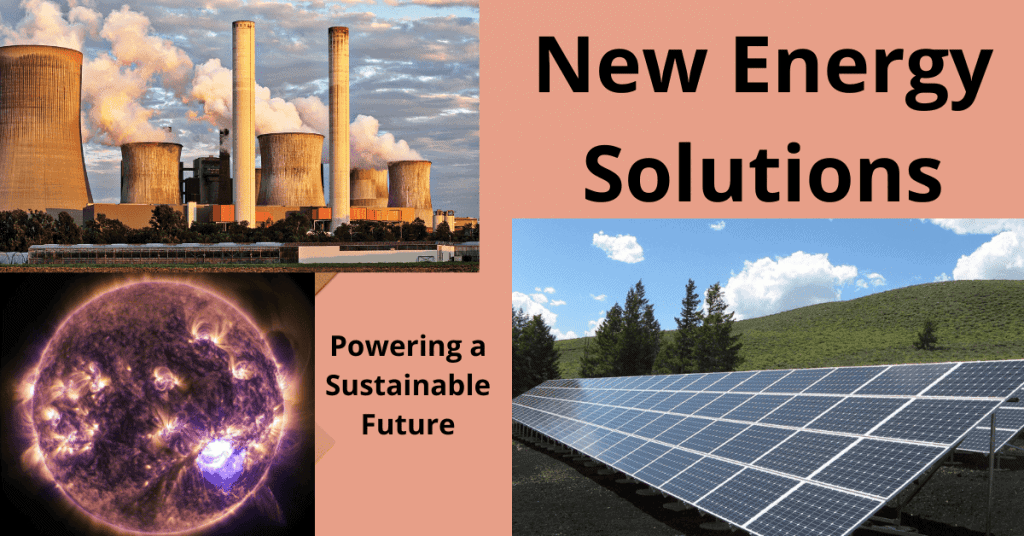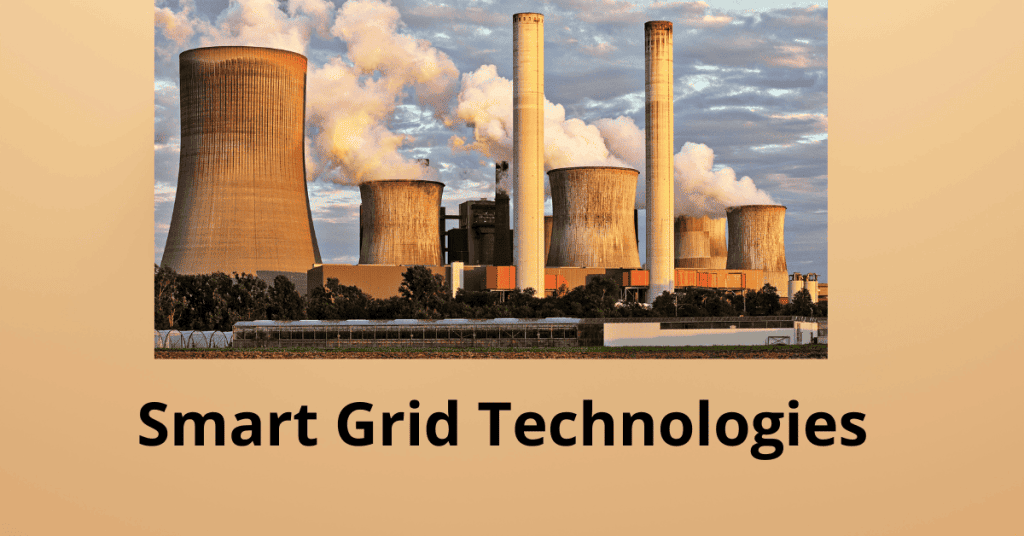Last Updated on July 28, 2024 by Gavi
One of the biggest challenges that the world faces today is the need to transition to a more sustainable future. Identification of future sustainable trends is very important.

It is no secret that our energy needs have been primarily met by traditional energy sources such as coal, oil, and gas, which have significant environmental impacts.
Additionally, our reliance on these finite resources is a threat to our energy security.
To combat these issues and achieve a more sustainable future, new energy solutions are being developed.
New Energy Solutions: Powering a Sustainable Future
As the world grapples with the environmental challenges of fossil fuels and the need for a transition to cleaner, more sustainable energy sources, the search for new energy solutions has become paramount.
This article delves into the emerging technologies and innovative approaches that are shaping the future of energy generation, storage, and distribution.
From renewable energy sources to energy-efficient practices, this comprehensive guide explores the various facets of new energy solutions that promise to reshape the global energy landscape.
Introduction
In the face of climate change and the depletion of traditional energy sources, the need for new energy solutions has never been more urgent.
Traditional fossil fuel-based power generation contributes significantly to greenhouse gas emissions and other environmental issues.
However, advancements in technology and a growing understanding of the importance of sustainability have paved the way for a revolution in the energy sector.
The Need for New Energy Solutions
- Environmental Impact: The burning of fossil fuels releases greenhouse gases into the atmosphere, contributing to global warming and climate change. New energy solutions aim to minimize these impacts and transition to cleaner alternatives.
- Energy Security: Relying heavily on fossil fuels makes countries vulnerable to geopolitical tensions and price fluctuations. Diversifying energy sources through new solutions enhances energy security.
- Resource Depletion: Fossil fuels are limited resources that will ultimately be exhausted. However, new energy solutions offer a sustainable path to energy production that avoids the depletion of valuable natural resources.
Renewable Energy Sources
Renewable energy sources are at the forefront of new energy solutions, offering clean, abundant, and virtually limitless power generation options.
1. Solar Energy
Solar energy is one of the most significant new energy solutions that can provide clean, renewable, and easily accessible energy.
The technology has come a long way since its inception, and it is now more cost-effective than ever before.
With continuing advancements in photovoltaic panel design, we can harness the power of the Sun to power our homes, cities, and even vehicles.
2. Wind Energy
Wind energy is another new energy solution that can provide clean and renewable energy. The development of more efficient and larger turbines has made wind energy a viable option for producing electricity on a large scale.
Additionally, wind energy can be used in smaller-scale applications like powering homes and businesses.
3. Hydroelectric Power
Hydropower is another renewable energy solution that utilizes the power of flowing water to generate electricity.
The development of new hydropower turbines and the refurbishment of old dams are making hydropower a more efficient and reliable source of energy.
Hydropower can be used in large-scale applications like powering cities or in smaller-scale applications like powering individual homes.
4. Geothermal Energy
Geothermal energy is a renewable energy solution that utilizes the Earth’s internal heat to provide power.
With the development of new drilling techniques, we can now tap into geothermal energy sources that were previously unreachable. Geothermal energy can be used for heating, cooling, and electricity generation.
5. Biomass Energy
Biogas is an alternative energy solution that can provide natural gas for heating and cooking.
It is produced from the decomposition of organic matter like food waste, agricultural waste, and sewage.
Biogas is becoming a popular option for replacing traditional fossil fuels such as propane and natural gas.
Advancements in Energy Storage
While renewable energy sources provide clean power, effective energy storage solutions are vital to ensure a steady supply of electricity even when the sun isn’t shining or the wind isn’t blowing.
Batteries
Advancements in battery technology have enabled the storage of surplus energy generated by renewable sources. Lithium-ion batteries, in particular, have gained popularity due to their high energy density and efficiency.
Pumped Hydro Storage
Pumped hydro storage involves pumping water from a lower reservoir to a higher one when excess electricity is available. The stored water can be released later to generate electricity when the demand is high.
Flywheels
Flywheel energy storage systems store energy by spinning a rotor at high speeds. This kinetic energy can be converted back into electricity when needed. Flywheels are efficient and have a long lifespan.
Thermal Energy Storage
Thermal energy storage systems store excess heat generated by renewable sources, such as concentrated solar power plants. The stored heat can be used to produce steam and generate electricity even at night or on cloudy days.
Statoil new energy solutions
Statoil, a leading energy company, has emerged as a prominent player in the development of new energy solutions.
With a strong commitment to sustainability and innovation, Statoil is actively contributing to the growth of renewable energy sectors such as offshore wind power, carbon capture and storage (CCS), and solar energy.
This article delves into Statoil’s efforts in these areas and explores their significance in the global energy landscape.
Smart Grid Technologies
The integration of smart grid technologies enhances the efficiency, reliability, and flexibility of the electricity grid.

Demand Response
Demand response programs incentivize consumers to adjust their electricity usage during peak demand periods.
By reducing consumption at critical times, demand response helps balance the grid and avoid blackouts.
Advanced Metering Infrastructure
Advanced metering infrastructure enables real-time monitoring and two-way communication between utilities and consumers.
This technology provides accurate data on energy consumption and facilitates energy management.
Grid Automation
Grid automation uses advanced sensors, controls, and communication technologies to automate grid operations. It improves grid reliability, reduces losses, and enables the integration of renewable energy sources.
Energy Efficiency Measures
Energy efficiency plays a crucial role in reducing overall energy consumption and optimizing resource utilization.
Energy-Efficient Buildings
Building design and construction techniques can significantly impact energy efficiency. Energy-efficient buildings incorporate insulation, efficient lighting, and smart HVAC systems to minimize energy waste.
Energy Management Systems
Energy management systems allow users to monitor and control their energy usage. By providing real-time data and analytics, these systems empower individuals and businesses to make informed decisions about their energy consumption.
Smart Appliances
Smart appliances are equipped with sensors and communication capabilities to optimize energy consumption.
They can adjust settings based on usage patterns and communicate with the grid to take advantage of off-peak electricity rates.
Integration of Electric Vehicles
Electric vehicles (EVs) are revolutionizing transportation and contributing to the shift toward clean energy.
Electric Vehicle Charging Infrastructure
The deployment of robust charging infrastructure is critical to support the widespread adoption of electric vehicles. Public charging stations and home charging solutions are essential to ensure convenient and accessible charging options.
Vehicle-to-Grid Technology
Vehicle-to-grid (V2G) technology allows electric vehicles to supply electricity back to the grid when not in use.
This bi-directional energy flow helps stabilize the grid and maximize the utilization of renewable energy.
Benefits of Electric Vehicles
Electric vehicles offer several advantages over conventional internal combustion engine vehicles, including reduced greenhouse gas emissions, lower operating costs, and improved air quality.
Government Initiatives and Policies
Governments around the world are implementing policies and initiatives to accelerate the adoption of new energy solutions.
Renewable Energy Targets
Many countries have set ambitious renewable energy targets to increase the share of clean energy in their overall energy mix. These targets provide a clear roadmap for the deployment of new energy technologies.
Incentive Programs
Incentive programs, such as feed-in tariffs and tax credits, encourage the adoption of renewable energy systems by providing financial benefits to individuals and businesses that invest in clean energy.
Carbon Pricing
Implementing carbon pricing mechanisms, such as carbon taxes or cap-and-trade systems, incentivizes businesses to reduce their
carbon emissions and invest in cleaner technologies.
Challenges and Opportunities
While new energy solutions offer immense potential, several challenges need to be addressed to ensure a successful transition.
Cost and Affordability
The initial costs of implementing new energy solutions can be high. However, as technology advances and economies of scale are realized, costs are expected to decrease, making clean energy more affordable.
Grid Integration
Integrating a higher share of renewable energy into existing grids presents technical challenges. Grid upgrades and improved transmission infrastructure are essential to accommodate variable and decentralized energy sources.
Public Acceptance
Educating the public about the benefits of new energy solutions is crucial for their acceptance and adoption.
Overcoming skepticism and addressing concerns related to reliability and affordability are key to gaining public support.
New Energy Solutions Conclusion
New energy solutions are essential for the transition to a sustainable future.
Solar, wind, hydropower, biogas, and geothermal energy are all renewable energy sources that can significantly reduce our reliance on traditional fossil fuels.
As technology continues to advance, these solutions will become more efficient, and cost-effective, and will eventually replace traditional energy sources altogether.
New Energy Solutions FAQs
What are some examples of renewable energy sources?
Solar energy, wind energy, hydroelectric power, geothermal energy, and biomass energy are examples of renewable energy sources.
How do energy storage systems work?
Energy storage systems store surplus energy generated by renewable sources and release it when needed, ensuring a steady supply of electricity.
What is a smart grid?
A smart grid is an advanced electricity grid that incorporates digital technologies to optimize energy distribution, enable real-time monitoring, and promote energy efficiency.
What are the benefits of energy-efficient buildings?
Energy-efficient buildings reduce energy consumption, lower utility bills, and contribute to a greener environment by minimizing greenhouse gas emissions.
Why are electric vehicles important for the energy transition?
Electric vehicles offer a cleaner and more sustainable alternative to conventional vehicles, reducing reliance on fossil fuels and contributing to lower carbon emissions.
Innovations in energy generation, storage, and distribution are rapidly evolving, and government support, along with public engagement, will be instrumental in driving the transition.
By working together, we can pave the way for a cleaner, more sustainable energy future for generations to come.